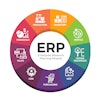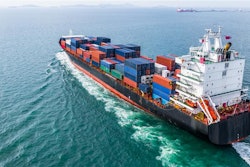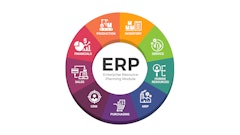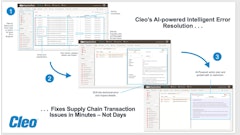
Nearly 40% of returns get liquidated, tossed away or donated on an average year, which adds up to 5 billion pounds of waste worldwide. When factoring in the Coronavirus disease (COVID-19)-fueled returns, which doubled in 2020, $428 billion worth of merchandise costs retailers about one-third of their annual revenue and wreaks environmental havoc in the form of product waste, packaging waste and transportation emissions.
The problem
Pre-COVID-19, consumer returns were an issue for retail sustainability and profits. Today, returns have doubled, and online returns have risen by nearly 46%. The reasons are multifold, including the fact that consumers are spending more time at home and shopping online, buying bulkier home items and engaging in bracketing–the act of purchasing multiple variations of an item with the intent to return one or more.
E-commerce returns are extremely unsustainable by the very nature that customers and retailers have to ship these unwanted items around the country, emitting harmful transportation fuels in the process. Along the way, various people are touching the products and repackaging them in new boxes and non-renewable plastic wrap. Products often travel from the consumer’s home to the store to the returns center before their final fate is determined. In the best-case scenarios, these products find a new home, but all too often, they end up in landfills instead.
The COVID-19 returns problem is compounded by the fact that retailers have almost no filters on what can and cannot be sent back. Many allow customers to return whatever they want regardless of the item’s value, size or condition. Low ticket items are generally the most harmful because by the time a $30 product makes it back to a returns center, the retailer already spent more money than the item's re-sale value and will likely toss it rather than expending more resources.
At the same time, there’s an argument that more oversized items are also extraordinarily wasteful due to transportation inefficiencies. When it comes to forward logistics, shipping carriers have it down. They carefully plan and pack each truckload, almost like a game of Tetris, with pallets that contain multiple products to optimize each route and reduce mileage. On the reverse side, however, logistics carriers aren’t as efficient. When carriers pick up bulky returns, they sometimes only stock one item per pallet.
The solutions
Retailers who employ dynamic technology, find the right partners and make returns as seamless as possible can help mitigate the environmental costs.
1. Use technology to create filters
Retailers must employ dynamic software that filters out low-value, unsustainable items at the point of return and determines the most planet-friendly paths for every single one. When that piece of technology says, “Do not accept this return, it’s not worth it,” some retailers are considering “return-less refunds.” Significant players have already implemented programs that determine if it makes sense to accept and process a return. If their system finds it’s not worth it, the retailers refund the customer while allowing them to keep the item.
Return-less refunds have real environmental advantages that result from eliminating packaging waste and unnecessary transportation emissions. But, there are also serious issues that result from allowing customers to keep items and their money. For one, returns fraud will inevitably rise to create a whole new set of headaches. For another, return-less refunds don’t fully extinguish the sustainability issue because even though these products don’t have to ship around the country, they are still unwanted. The only difference is now the customer has to figure out what to do with them. Most times, consumers will also toss these items rather than re-use, re-purpose or recycle them. So, the landfill issue is still in play.
Product waste is especially harmful in electronics, which pollute local land and water supplies. More than one-third of customers have no idea how to properly recycle electronics, according to a recent goTRG survey. Nearly 40% either never recycle or only consider doing so once every five years. Most customers will not drive more than 10 miles to safely dispose of their devices.
That’s why retailers should create filters and consider return-less refunds. Organizations considering this method must first have systems to deal with fraud and understand that they are still responsible for what happens to orphan items. Ethical retailers should help spread awareness about where customers can recycle and donate products they don’t want. Or better yet, retailers should find a way to help customers seamlessly return items to stores to reduce waste.
2. Make returns available anywhere
Everyone has a website, but not every company has a storefront, and not every storefront has multiple convenient locations for customers to take items back. Omnichannel organizations need to make it simple for customers to buy online and return in stores regardless. E-commerce companies without a physical storefront should partner with retailers to accept returns on their behalf. For example, Amazon’s concierge desks inside Kohl’s.
Even retailers that have various locations are seeing less in-store activity due to COVID-19 concerns. In 2020, more than half of consumers chose contactless shopping for social distancing purposes, and these types of customers also want contactless returns. If customers don’t have a way to safely and efficiently return items to stores, they’ll avoid it altogether and ship the items instead.
Nearly 30% of retailers introduced curbside options in 2020, and this trend must continue upward in 2021. Brick-and-mortar stores that make it simple for customers to return to their property without actually going inside will improve profits and reduce their environmental impact.
3. Find the right partner for reverse logistics and disposition decisions
Ultimately, retailers must accept as many returns as possible to recover lost profits and reduce their carbon footprint–even on lower ticket items. But, most companies can’t do it alone.
Organizations need to find the right partners to help them manage the process from the point of return to in-store and online integration, supply chain, re-sale and reconciliation. Among the variety of services reverse partners can provide, consolidation is a very valuable upstream offering. Returns management partners can help retailers consolidate returns at their facilities to reduce mileage and save on the cost of shipping. They can also help retailers figure out what to do with these items once they arrive at the returns center.
Disposition partners are generally technology-based companies that use artificial intelligence (AI) to analyze market trends, storage and processing costs and re-sale values to determine the most efficient way to process returns. Ultimately these partners help retailers gain the highest recovery with the most negligible environmental consequences.
The best returns management companies can even help retailers recover profits from used and defective products by repairing and reselling the items or repurposing the parts to fix other products. Ultimately, the most effective partner will be able to take in a product, add value to it and then re-disposition it on the retailer’s behalf. In the process, far fewer items end up needlessly clogging up landfills.
The best way to make returns more sustainable is to eliminate them, but that’s not realistic. Retailers must adjust to the new COVID-19 era that has permanently shifted shopping and returns behavior. They must employ dynamic technologies that filter out costly, unsustainable items, and find a way to encourage safer in-store returns. In cases where significant online returns are inevitable, retailers must seek partners to help them consolidate shipments, repair used items and resell using the fewest miles and touchpoints possible.




















